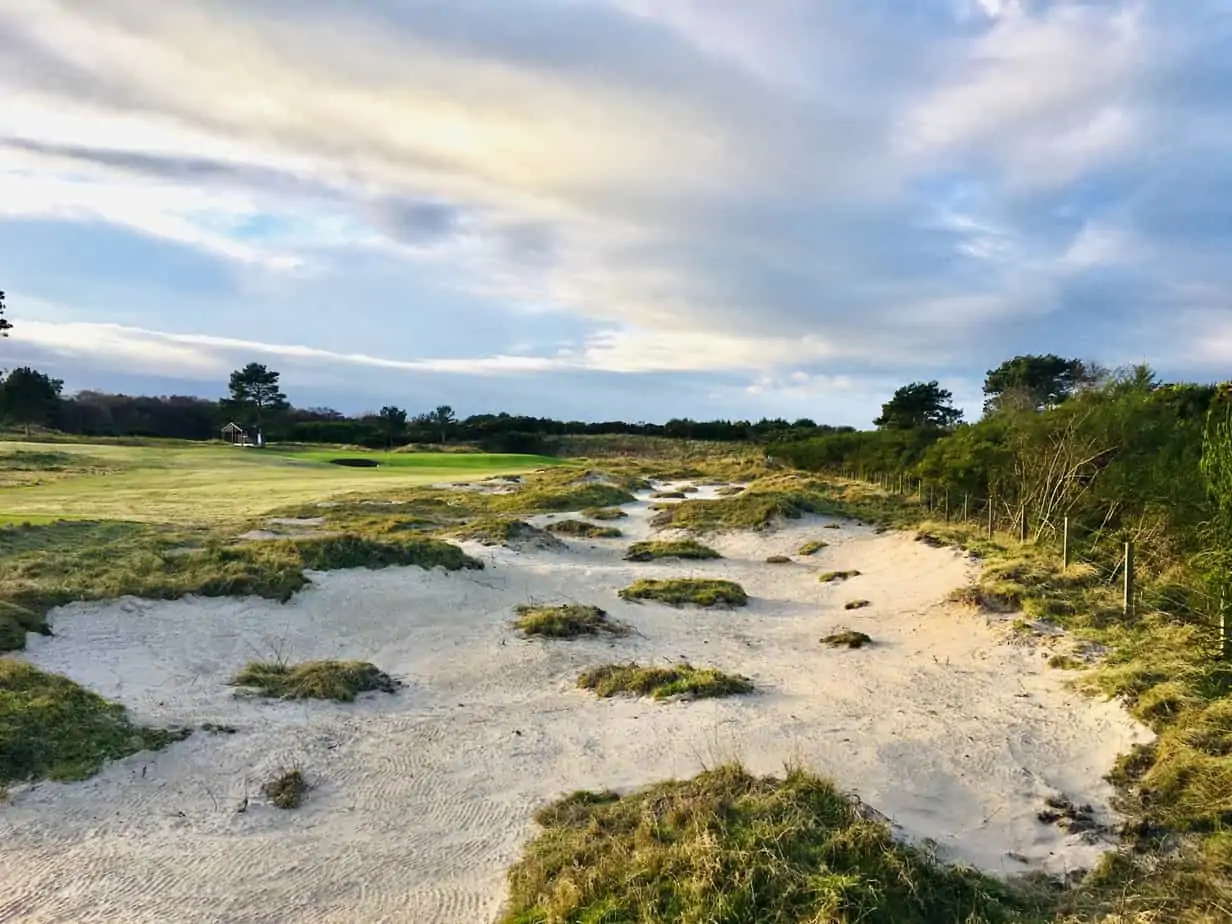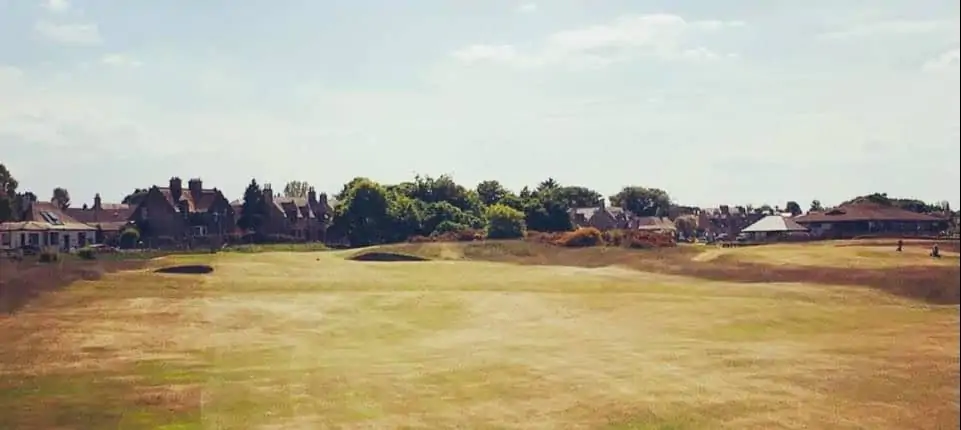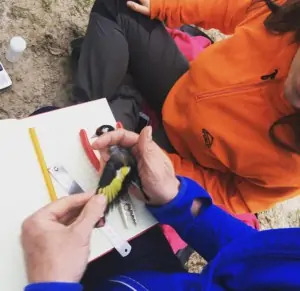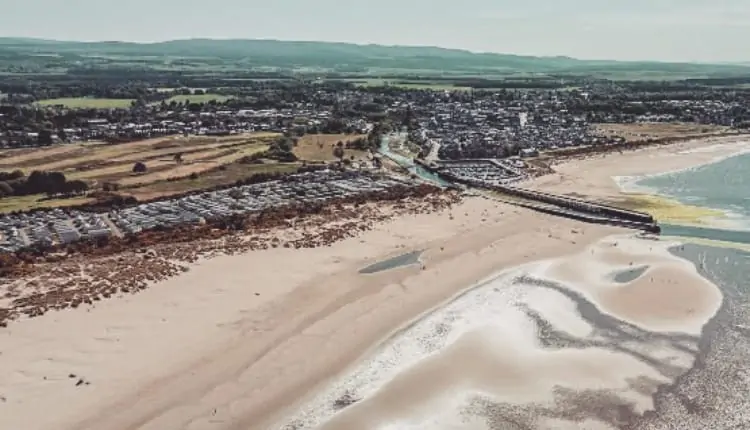The sustainability champion’s recipe for success
Scotland’s dune courses are often the measure of all things for golfers worldwide when it comes to integrating the golf course into the natural landscape. The following also applies to these golf courses: Depending on the care and orientation of the course, historical structures can also break down. For years, Nairn Dunbar Golf Links has made a name for itself with efforts to recreate the classic coastal dune landscape in the most sustainable way possible. In December 2020, the course, which dates back to 1899, was named winner of the British Golf Environment Awards. The driving force behind the various projects is Richard Johnstone, Superintendent of the course.
Nairn Dunbar Golf Links is Britain’s 2021 Sustainability Champion – why are you interested in the topic?
I’ve actually been interested in sustainability throughout my greenkeeping career, but it wasn’t until I became golf course manager in 2016 that I had the opportunity to implement my ideas and introduce sustainable management. Sustainable management was an important part of my presentation during the interview process for the Course Manager job and fitted perfectly with the plan to restore the links character of the course. So far I’ve had a lot of support from management, club committee, members and positive feedback from guests.
How difficult was it to convince the members of sustainable approaches?
No question, in the beginning it was difficult for members to imagine what their course would look like after implementing a sustainable approach to golf management. It was important to communicate well so that members could better understand the reasons for working on the pitch. To do this, we use a variety of methods such as social media, course inspections, newsletters, emails, member information evenings and our golf course blog, which was awarded the GCI’s best golf course blog in 2018.
To what extent do you increase the quality of the course through sustainable management?
We have implemented a number of management plans to restore the links character of our golf course. Our focus has been on restoring the finely textured turf that once dominated this links course before excessive fertilization and watering caused an unfortunate change. By reducing organic matter, followed by a sustainable reseeding program, we are now much less dependent on chemicals. The use of sand as a top dressing combined with increased sun exposure and air movement has not only strengthened our surfaces but has drastically reduced earthworm infestations. In addition, we have implemented a full wetting agent program on all plots which encourages the establishment of the fine-leaved grasses. The fine grasses are much cheaper to maintain and ensure fewer outbreaks of disease. The fixed course conditions are also much more pleasant to play.
Are your members bothered by the rather brownish color of the fairways in summer?
Johnstone: Our members have accepted the solid brown color of the lawn. Nairn has its own unique microclimate with only around 570mm of rainfall per year. The fairways are also lined with ecological, long and open rough. This gives the course some definition and allows members and visitors to find their balls and speed up play. This is more comfortable, especially for older members, because the ball then flies further, so that they can reach the green with a shorter club.
How are you struggling with the water restrictions in Scotland?
Johnstone: We are fortunate to have a natural spring that flows through the golf course. Otherwise, we have a license here that tells us how much water we can take from the dune silt fed by the spring each year.
What is your favorite project among all the sustainability measures?
Johnstone: With the dunes among the most threatened habitats in Europe today, it was important that we take the necessary steps to prevent total biodiversity loss in Nairn Dunbar. To create healthier and more ecologically beneficial gorse strands, the gorse was pruned and completely removed where it was too leggy and degenerate. We’ve now created bare sandy patches in areas where it was negatively impacting play. The feedback we’ve received on the work so far has been fantastic. Much of the dune habitat has now been restored and offers a real test of links golf.
But your bird project has also caused quite a stir?
Johnstone: The migratory bird ringing project started in 2017. A total of 218 birds were caught and released, including 16 different species. Some were recaptured and released from Spain, Africa and France. To learn more about the birds, their biometric data is recorded, which is a good indicator of the health of the environment. We hope that regular surveys will allow us to recapture the ringed birds so that we can check their development. The rings are provided with an individual number specific to each bird. This number, in conjunction with the BTO database, allows us to track the bird’s movements. If the bird is recaptured or found we will be informed and can find out how far the bird has travelled. As well as ringing each bird, various other measurements are taken including age, sex, wing length and readings that tell us how much fat and muscle they have. This also allowed us to learn more about the many different species of birds in Nairn Dunbar, for example how long the birds live and the survival rate of the chicks.
Are there any new projects you have in mind for 2021?
Johnstone: Yes, we continue to look at different habitats on the links. There are still large areas of natural linksland that need to be fully restored, including dune systems and hilly topography. We will continue to introduce bare sand habitats, which have become a classic feature of our site, and we aim to establish a seasonal wetland habitat this winter that is an ideal habitat for amphibians, reptiles and a rich variety of plant and aquatic invertebrates.










